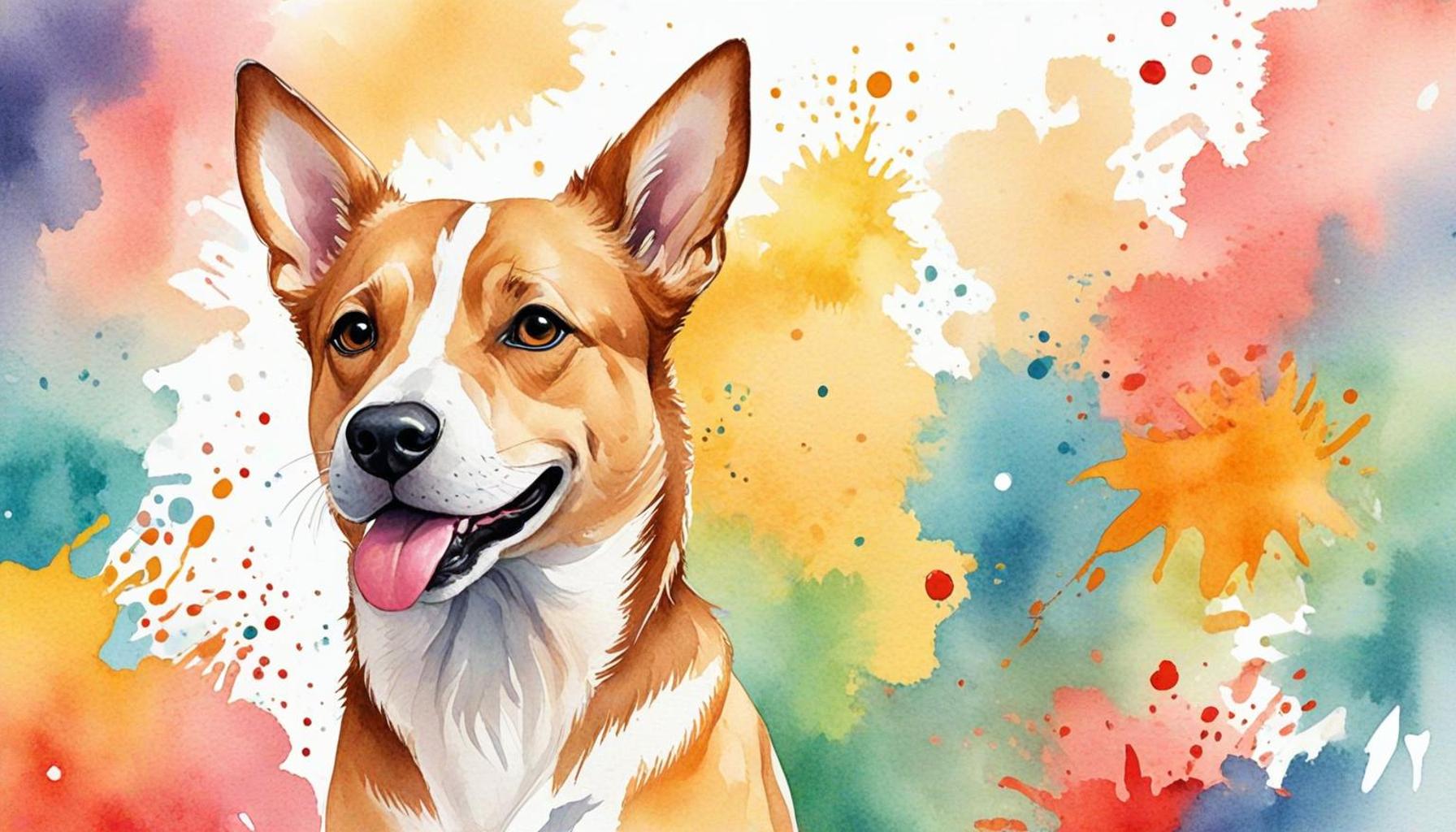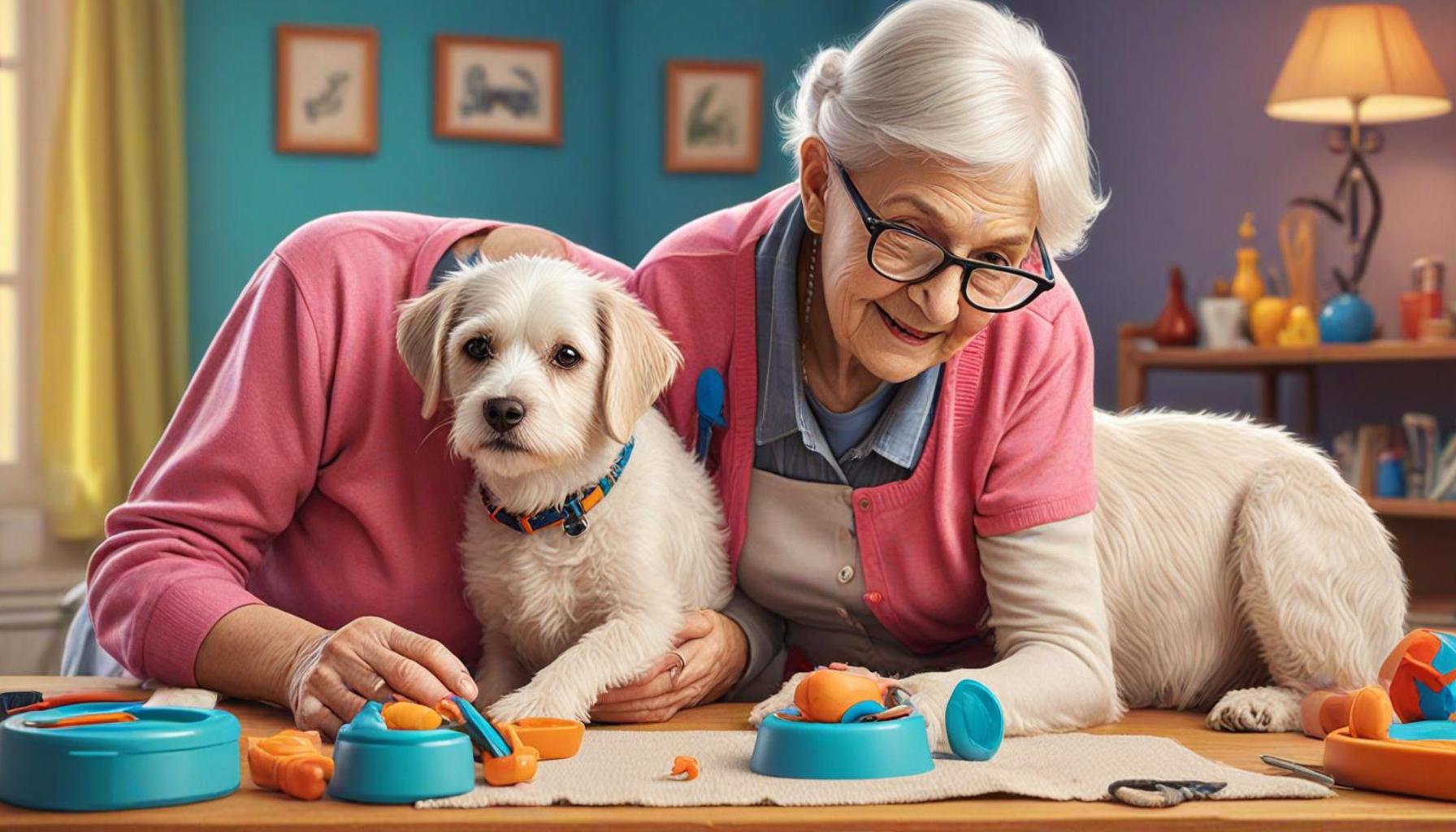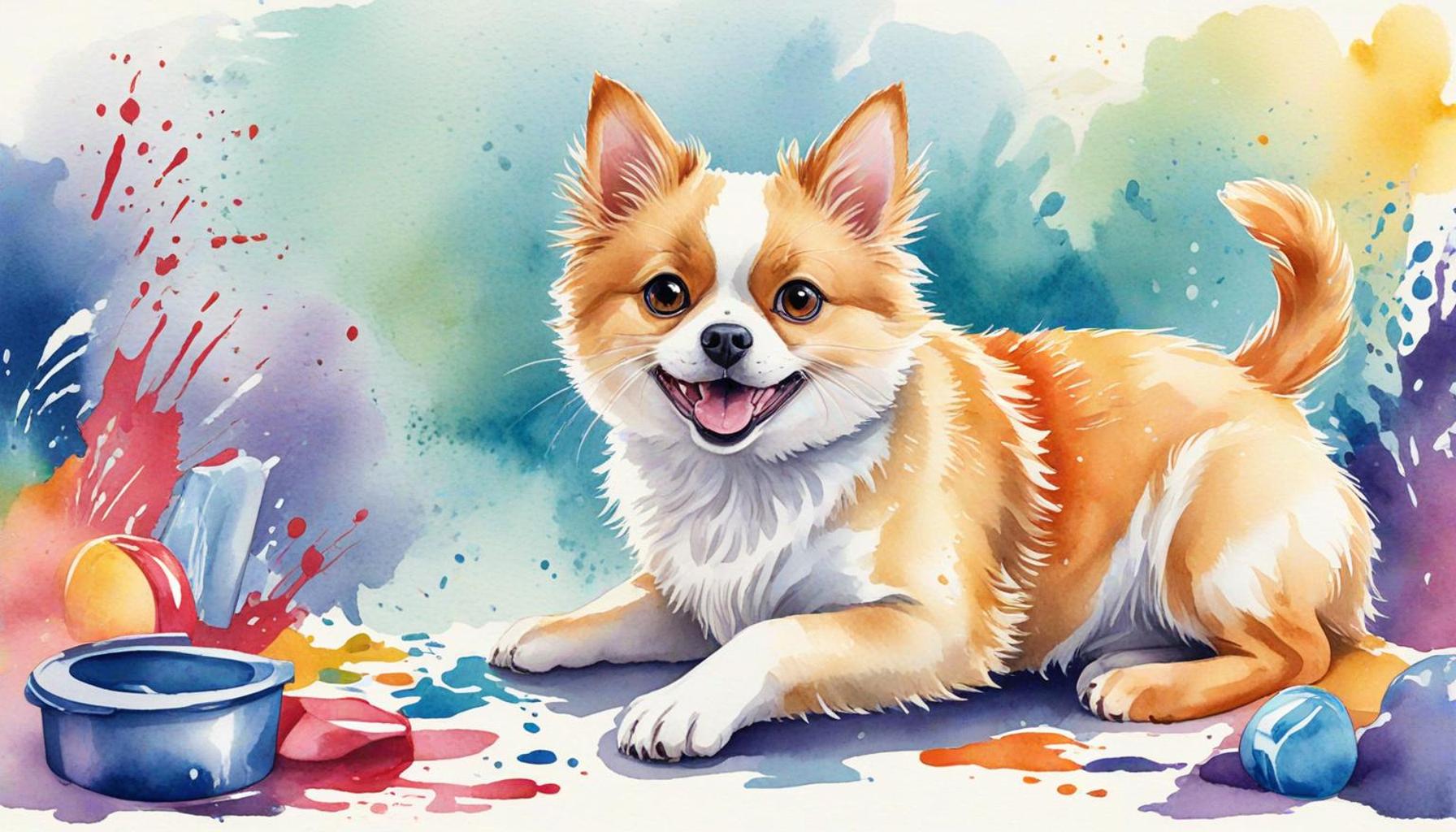Positive Reinforcement Techniques for Dog Training: How to Motivate Your Pet

Unlocking the Power of Positive Reinforcement
Dog training doesn’t have to be a daunting task. With the right approach, it can transform into a rewarding experience for both you and your furry friend. One of the most effective methods is positive reinforcement, a technique that encourages desired behaviors through rewards.
At its core, positive reinforcement relies on the simple principle of rewarding good behavior. Rather than using punishment or harsh techniques that can foster fear or mistrust, this approach helps your dog associate actions with positive outcomes, leading to effective and lasting training. Here are some key benefits of using this technique:
- Strengthens the bond between you and your dog, cultivating a relationship built on trust and understanding.
- Enhances learning by making training enjoyable, which encourages dogs to engage actively during sessions.
- Reduces anxiety and fear-based behaviors, making your dog feel safe in the training environment.
Imagine being able to train your dog to obey commands like “sit” or “stay” while using treats, praise, or playtime as rewards. This method is not only effective but also a fun way to interact with your pet. For instance, in Nigeria, where diverse lifestyles and environments can impact a dog’s behavior, positive reinforcement becomes an invaluable tool. Whether living in the bustling city of Lagos or the serene countryside of Jos, dog owners can adopt this method to suit their unique circumstances and challenges.
The essence of positive reinforcement is in its flexibility. Different rewards can be used simultaneously to keep your dog motivated. Consider a scenario where a dog owner in Abuja uses small pieces of dried fish as high-value treats that can capture the dog’s attention during training sessions. These treats, combined with enthusiastic praise, keep the dog focused and excited about new commands. Additionally, incorporating playtime with a favorite toy as a reward can further enrich the training experience and foster a sense of accomplishment in your dog.
In the following sections, we will explore various positive reinforcement techniques tailored to keep your dog motivated and engaged. From practical tips that can be applied in daily routines to inspiring success stories from fellow dog owners across Nigeria, you will gain insights that can transform your training sessions into enjoyable bonding moments. Positive reinforcement is not just about obedience; it’s about creating a harmonious and fulfilling relationship with your canine companion.
SEE ALSO: Click here to read another article
Effective Strategies for Positive Reinforcement
When it comes to dog training, the methods you choose can have a significant impact on your pet’s learning curve. Positive reinforcement techniques offer a range of strategies to harness your dog’s instinctual responses in ways that promote good behavior. Here are some practical techniques that can be implemented to ensure your dog remains motivated during training sessions:
- Use of Treats: Treats are perhaps the most widely recognized form of positive reinforcement. By offering small, high-value treats when your dog successfully performs a desired behavior, you create a powerful association. In Nigeria, locally sourced goodies such as small pieces of suya or bits of cooked chicken can work wonders. Make sure to keep the treats small, so your dog can enjoy them without filling up too quickly!
- Verbal Praise: Never underestimate the power of your voice. Verbal praise, delivered in an enthusiastic tone, can motivate your dog just as much as treats. Phrases like “Good boy!” or “Well done!” can reinforce the desired action. This method also helps in building a positive emotional connection with your dog.
- Playtime: Incorporating playtime as a reward is another effective technique. If your dog responds well to certain commands, rewarding them with a session of their favorite game can enhance the excitement of learning. For instance, if you’re in a park in Abuja, throwing a frisbee or playing tug-of-war can significantly encourage your dog during training.
- Clicker Training: This method involves using a clicker device to mark the exact moment your dog performs a desired behavior. The click sound is then followed by a reward such as a treat or praise. The distinct sound creates a clear signal for your dog, making it easier for them to understand what actions are rewarded.
- Consistency is Key: Consistency is a cornerstone of effective training. Ensure that everyone in your household follows the same commands and rewards. This uniformity helps your dog understand what is expected, reducing confusion and enhancing their learning process.
In addition to these strategies, it’s essential to adapt your techniques based on your dog’s personality and breed. Some dogs may respond better to certain types of food, while others may thrive on more interactive play. As you navigate through training, keeping an eye on your dog’s reactions is crucial to tailoring your approach for maximum effectiveness.
Moreover, recognizing the individual achievements of your dog can amplify their motivation. Whether your dog learns to sit on command in Lagos or master a trick in Port Harcourt, celebrating these milestones with enthusiasm can significantly boost their confidence and willingness to learn further. Understanding that training is a gradual process helps to foster patience, ensuring that both you and your pet can enjoy the journey together.
In the following sections, we will break down how these techniques can be specifically applied in daily scenarios and share inspiring success stories from dog owners across Nigeria who have embraced positive reinforcement to cultivate well-behaved, happy pets.
| Technique | Advantages |
|---|---|
| Clicker Training | Utilizes a distinct sound to mark desired behavior, improving clarity and timing. |
| Food Rewards | Tasty treats motivate dogs to learn quickly and maintain engagement during training. |
| Verbal Praise | Strengthens bond and boosts confidence as dogs thrive on positive affirmation. |
| Toys and Playtime | Activates dogs’ instincts to play, making learning enjoyable and reducing stress. |
The above table outlines effective positive reinforcement techniques that can be employed to train your dog successfully. Techniques like clicker training and food rewards provide clear markers that help your pet understand what behaviors are desired. Verbal praise reinforces the bond between you and your dog, while toys and playtime transform training sessions into engaging activities that motivate your pet to learn. Collectively, these methods foster an environment where dogs not only learn new commands but also enjoy the process, leading to a more responsive and well-behaved companion. By exploring these techniques further, you can create personalized training plans that suit your dog’s unique personality and needs.
YOU MAY ALSO LIKE: Read read another article
Understanding Your Dog’s Motivation
In order to effectively employ positive reinforcement techniques, it is crucial to understand what truly motivates your dog. Each dog is unique, and their preferences can vary based on factors such as age, breed, and even personality traits. Engaging with your dog to discover their motivations will allow you to tailor your training methods to be more effective.
Identify High-Value Rewards: Not all treats hold equal value for every dog. For instance, while a softly cooked potato might attract some dogs, others might find it less appealing than store-bought jerky strips. Conducting a “taste test” to determine which treats your dog prefers can provide you with a potent tool for training. This strategy not only keeps your dog excited about training sessions but also allows you to form stronger behavioral associations.
Exercise as Motivation: Many dogs respond positively to physical engagement. If your dog exhibits more enthusiasm for their favorite game of fetch rather than food rewards, consider using exercise as a form of reinforcement. After successfully executing a command, a 10-minute game of fetch or a vigorous run is an effective way to reinforce positive behavior. This approach simultaneously addresses your dog’s need for exercise while strengthening their obedience.
Socialization and Bonding
Building a strong bond with your dog can significantly enhance their responsiveness to positive reinforcement. Dogs are social animals that thrive on companionship, so ensuring that you invest time in building this relationship will make the training process more successful.
- Engaging Together: Activities that involve teamwork, such as agility training or obedience classes, can help foster a sense of partnership between you and your dog. The joy of engaging in activities together can be highly motivating for both parties.
- Social Interactions: If your dog enjoys interacting with other dogs or people, consider incorporating these interactions as part of their rewards. After a successful command, allowing your dog to greet a fellow canine friend can be an excellent incentive to follow commands.
The Role of Environment
Your training environment can also play a crucial role in how effectively positive reinforcement works. A distraction-free setting is particularly beneficial for initial training sessions. However, as your dog begins to learn commands, gradually introducing distractions can further solidify their training.
Controlled Settings: Begin training in a quiet area, perhaps your home or a calm neighborhood. As your dog masters commands, progress to busier locations like parks. Frequent exposure to new environments while using positive reinforcement will help your dog learn to focus amidst challenges.
Visual Cues: Incorporating visual cues alongside verbal commands can enhance understanding. Whether it’s using hand signals or gestures, these aids can reinforce your dog’s learning. For dogs who visually respond better, using targets like colored cones can add another layer of motivation.
Integrating these strategies into your training can be a game-changer. Each technique not only helps in reinforcing good behavior but also fosters a deeper connection between you and your pet. Motivating your dog through understanding their preferences and using a holistic approach will lead not only to effective training but to a joyful relationship, ultimately making the training journey a fun and rewarding experience for both of you.
CHECK OUT: Click here to explore more
Conclusion: Transforming Training into a Bonding Experience
In summation, the journey of dog training through positive reinforcement techniques is not merely about instilling commands; it is about nurturing a strong bond between you and your furry companion. Recognizing and understanding your dog’s unique motivations—whether they be treats, play, or social interactions—opens a pathway to effective training sessions that are both enjoyable and rewarding. By identifying high-value rewards and incorporating physical activities, you will reinforce positive behavior while also catering to your dog’s instinctual needs.
Moreover, the importance of socialization and creating a supportive learning environment cannot be overstated. Investing time to engage in activities that foster teamwork will enhance both your dog’s responsiveness and your mutual enjoyment. Remember, every training success is not just a victory for obedience but a step towards a deeper companionship. As you introduce them to diverse environments, consistent practice in controlled settings will hone their skills and boost their confidence.
Ultimately, dog training should be approached with patience and empathy, transforming potential frustrations into fulfilling experiences. With the right techniques and dedication, you can motivate your pet, resulting in a well-trained dog that thrives on love, trust, and partnership. So embark on this exciting journey of training with your dog—filled with joy, discovery, and growth—and experience the profound connection that positive reinforcement brings to your relationship.


